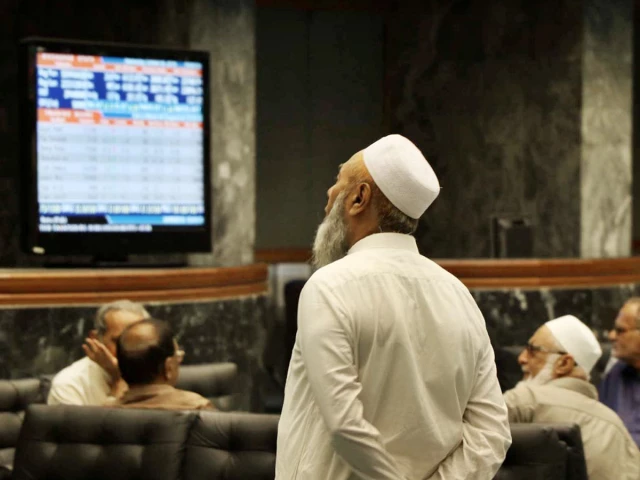Business
Pakistan Gears Up for IMF Review Talks under EFF Program – SUCH TV

Pakistan is preparing for its next round of review talks with the International Monetary Fund (IMF), set to begin on September 25. A successful review could unlock the IMF Board’s approval of a $1 billion tranche under the $7 billion Extended Fund Facility (EFF) program, under which Pakistan has already received over $2 billion in two installments.
Sources say several key structural reforms remain incomplete ahead of the review, raising concerns about Pakistan’s compliance track record.
Out of 22 structural benchmarks, five targets have yet to be met.
One major pending issue is the privatization of electricity distribution companies.
The IMF had required a finalized policy action plan for privatization and related transactions, which remains incomplete.
Additionally, the target of publishing the Corruption and Governance Diagnostic Assessment Report has not been achieved, according to sources.
Similarly, amendments to the State-Owned Enterprises (SOEs) Act and the Sovereign Wealth Fund law are still pending.
The IMF has also called for the redrafting of the Public Finance Management Act, which is yet to be completed.
The upcoming discussions are expected to focus heavily on these pending reforms, with Pakistan seeking to assure the IMF of its commitment to structural changes in order to secure continued financial support.
Business
Young people to be hit hardest by UK’s ageing society, report suggests

Young people will be hit hardest by successive governments’ failure to focus on financial and societal challenges caused by an ageing population, a House of Lords report has suggested.
They will need to plan and prepare to work longer and save more from a much earlier age, the economic affairs committee said.
The report also found that the crisis in adult social care “remains a scandal” which needs to be addressed urgently.
Committee chair Lord Wood of Anfield told the BBC it was a “struggle to find where in government” there was a focus on ageing and the “transformational effects” it was going to have on people.
“Ageing is something that we’re just watching happening”, he told BBC Radio 4’s Today programme, adding: “We know that adaptation is the way forward”.
Policies governments have used to address the impact of declining fertility and rising life expectancy in the UK – raising the state pension age or increasing immigration for example – were not adequate solutions on their own, the report said.
Getting more people in their 50s and 60s to stay in or return to work “is key”, the committee said, and the government must prioritise incentives to do so.
It found that while age discrimination may reduce the number of over 50s working, it heard evidence that its most damaging form may be self-directed, with older workers mistaken about the extent they faced and then limiting their own decisions.
It also said an ageing population will need more care workers, leaving fewer workers for other parts of the economy.
There is “widespread ignorance” of how much it costs to retire, it said, and the government should consider an education campaign – as well as finding out if the UK’s financial services sector is equipped to provide for the population as it ages.
Lord Wood said that the government and financial services industry needs to devise “more innovative ways of getting younger people to think about lives frankly they can’t conceive of at the moment – when they’re in their eighties and early nineties.”
“There’s a long time for them to be financially planning for at a time when we know young people are doing less financial planning,” he added.
“Raising the state pension age, which saves the government money, but increases pensioner poverty as many people have already stopped working by their sixties, is a red herring.
“To successfully confront this challenge, the approach to financial management of today’s and tomorrow’s young people will need to change.”
Business
India-Oman CEPA rollout: Trade pact may take effect in three month; Piyush Goyal flags faster execution – The Times of India

India and Oman are aiming to operationalise their recently signed Comprehensive Economic Partnership Agreement (CEPA) within the next three months, Commerce and Industry Minister Piyush Goyal said on Friday, signalling a faster rollout than several past trade pacts, PTI reported.The India–Oman free trade agreement was signed on December 18. Under the CEPA, Oman has offered zero-duty access on more than 98 per cent of its tariff lines, covering 99.38 per cent of India’s exports to the Gulf country. At present, these products attract import duties ranging from 5 per cent to as high as 100 per cent.
“All major labour-intensive sectors will get nil duty,” Goyal said, listing gems and jewellery, textiles, leather, footwear, sports goods, plastics, furniture, agricultural products, engineering goods, pharmaceuticals, medical devices and automobiles as key beneficiaries.On the Indian side, New Delhi has offered tariff concessions on 77.79 per cent of its total tariff lines, or 12,556 product categories, which together account for 94.81 per cent of India’s imports from Oman by value.“The Oman minister and I have discussed that this agreement, we will try to operationalise within three months,” Goyal told reporters, contrasting the timeline with Oman’s earlier trade deal with the US, which was finalised in 2006 but implemented only in 2009.Highlighting investment opportunities, Goyal said sectors such as steel, energy, education and healthcare held strong potential for Indian companies in Oman, particularly resource-linked industries. He pointed to a large green steel project in the pipeline and growing interest in converting energy into green hydrogen or green ammonia for exports.“There is a lot of interest because they have large land banks,” he said, adding that opportunities also exist in marble processing, battery manufacturing, education and healthcare.Goyal said Omani businesses were keen to partner with Indian firms, citing interest from an Omani dairy company in forming a joint venture with Amul. He added that Oman’s sovereign wealth fund and companies had been invited to explore investments in India.
Business
Trump’s ‘Gold Card’ defines wealth as an ‘extraordinary ability.’ Immigration experts say it raises questions

President Donald Trump’s new “Gold Card” visa program uses a novel definition of wealth as a job skill to allow the overseas wealthy to bypass immigration rules and secure citizenship, according to immigration attorneys.
Trump last week announced the start of applications for the “Trump Gold Card,” a new investment visa for foreign nationals. In exchange for $1 million and a $15,000 processing fee, “Gold Card” applicants will get full-time residency in the U.S. in “record time,” according to the program’s website. The website also offers a “Corporate Gold Card,” allowing companies to pay $2 million to secure a “Gold Card” for an employee, and a “Platinum Card,” which offers special tax benefits and may eventually be offered for $5 million.
Only Congress can set immigration policy, meaning the president doesn’t have the power to create or destroy a visa program. So to create the “Gold Card,” Trump is effectively adding a new fee model to two existing programs – known as EB-1 and EB-2 – experts explained to CNBC.
The EB-1 and EB-2 programs are both employment-based programs aimed at attracting award-winning or celebrated professionals. The EB-1 program, nicknamed the “Einstein Visa,” is aimed at those with “extraordinary abilities” – such as scientists, artists, entrepreneurs, athletes and professors who have achieved “sustained international or national acclaim.”
The EB-2 is for researchers, scientists and others whose skills are useful to help solve national problems, like a leading cancer researcher developing new treatments, or a top energy scientist who can help expand the power grid.
White House officials say that the $1 million payment is proof that “Gold Card” holders are successful business people who meet the requirements for exceptional abilities. Anyone with $1 million to spend on a visa is likely to be a productive addition to the American economy and society, they say. Entrepreneurs who started companies overseas can come to the U.S. to expand or start new ventures, creating more jobs. Spending by the “Gold Card” wealthy is also expected to help real estate, the service economy and other industries.
“Why shouldn’t we expedite the people who are willing to step up, to give the United States $1 million,” Commerce Secretary Howard Lutnick told CNBC last week. “Let’s bring in the top of the top, the best. Why should we take people who are below average?”
Immigration attorneys, however, say that replacing highly skilled or celebrated talents with foreign nationals whose sole qualification is writing a $1 million check distorts the intent of the EB-1 and EB-2 programs. Not everyone with $1 million payment is a high-achieving businessperson or entrepreneur, they say. Some may have borrowed the money from friends, family or a lender. Others may have inherited their fortunes but have scant job skills.
“Having $1 million has nothing to do with your value as a person of extraordinary ability,” said Emily Neumann, an immigration attorney with Reddy Neumann Brown PC. “It doesn’t mean you are able to provide value to the United States of America. These categories were supposed to be reserved for people who can foster innovation and contribute to the economy and create jobs. There is no requirement that “Gold Card” holders have a track record of any of those things, just because they happen to have $1 million.”
While “Gold Card” applicants can’t legally skip the current waiting line for EB-1 and EB-2 holders, some attorneys fear the White House will give “Gold Card” applicants priority. Neumann said she has an Indian client who’s a leading expert in artificial intelligence and machine learning and is working on AI applications for doctors to better diagnose patients. He’s approved for the EB-1 but is still waiting on a green card, which could take years.
“They’re using up a limited number of green cards meant for people who have done wonderful things,” she said. “It’s a very different standard.”
Using the EB-1 and EB-2 programs for the “Gold Card” program has created other potential hurdles. While Trump has said he would sell “millions” of “Gold Cards,” and Lutnick said sales could raise $1 trillion in revenue, the two programs are capped at around 28,000 a year. Individual countries are capped at 7% of the total, which is why the the waiting list for E-1 and E-2 applications from India and China already extends for several years.
Immigration attorneys say India and China would be largest sources of demand for “Gold Cards.” Yet because of the waiting lists, few are likely to apply.
“If ‘Gold Card’ holders will be allowed to jump the queue, there will likely be lawsuits from those currently on the wait list,” said Reaz Jafri, an immigration attorney with the international law firm Withers. “And if not, who will want to pay the $1 million and then wait for three years?”
The unanswered questions and legal risks surrounding the “Gold Card” have caused potential buyers to hold off on applying, attorneys say. Dominic Volek, group head of private clients at Henley & Partners, said a number of his clients in Taiwan, Vietnam and Singapore are interested in the “Gold Card” but are waiting for proof that the program works.
Some are also worried about paying the $1 million and then having their visas overturned by a court or a future Democratic administration.
“They want to see the dust settle and see if there are any major legal challenges,” Volek said.
Another concern is the structure of the fee. While some national investment visas are more expensive – such as Singapore’s at nearly $8 million or New Zealand’s at nearly $3 million – they’re structured as investments rather than non-refundable payments. Without an explicit guarantee of a green card, the overseas wealthy are reluctant to pay the $1 million.
“It’s not clear if you make the payment once it’s approved or you provide the payment as evidence, or if it’s kept in escrow during the process,” Jafri said. “They haven’t addressed so many basic questions.”
Proof of funds is proving to be another hurdle for the overseas wealthy. In order to screen for money laundering or criminal activity, the U.S. government typically requires proof that the $1 million fee didn’t come from illegal or illicit sources. Many potential applicants from Asia, Africa and the Middle East are already balking at the demands, since financial documentation is not as thorough.
“The biggest sticking point for a lot of clients is being able to document the source of money,” Jafri said. “In certain parts of the world it’s not so easy to document.”
-

 Business6 days ago
Business6 days agoHitting The ‘High Notes’ In Ties: Nepal Set To Lift Ban On Indian Bills Above ₹100
-

 Politics1 week ago
Politics1 week agoTrump launches gold card programme for expedited visas with a $1m price tag
-

 Business1 week ago
Business1 week agoRivian turns to AI, autonomy to woo investors as EV sales stall
-

 Sports1 week ago
Sports1 week agoU.S. House passes bill to combat stadium drones
-

 Sports1 week ago
Sports1 week agoPolice detain Michigan head football coach Sherrone Moore after firing, salacious details emerge: report
-

 Fashion1 week ago
Fashion1 week agoTommy Hilfiger appoints Sergio Pérez as global menswear ambassador
-

 Business1 week ago
Business1 week agoCoca-Cola taps COO Henrique Braun to replace James Quincey as CEO in 2026
-

 Tech1 week ago
Tech1 week agoGoogle DeepMind partners with UK government to deliver AI | Computer Weekly














